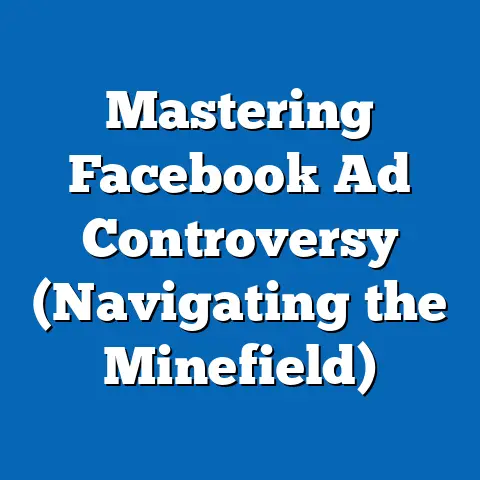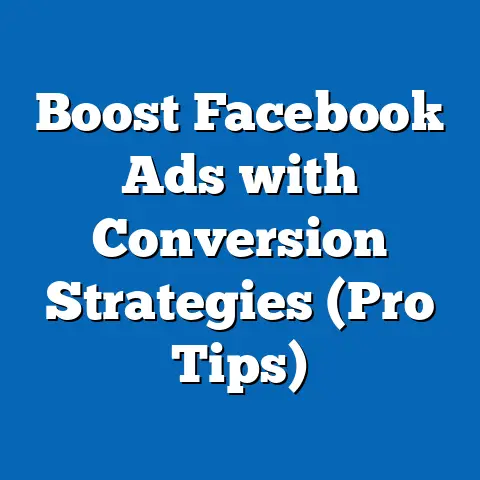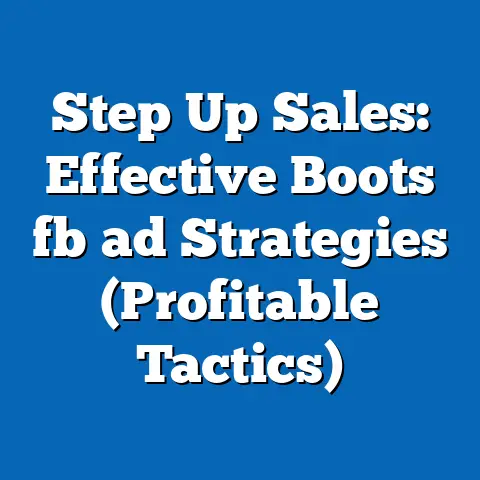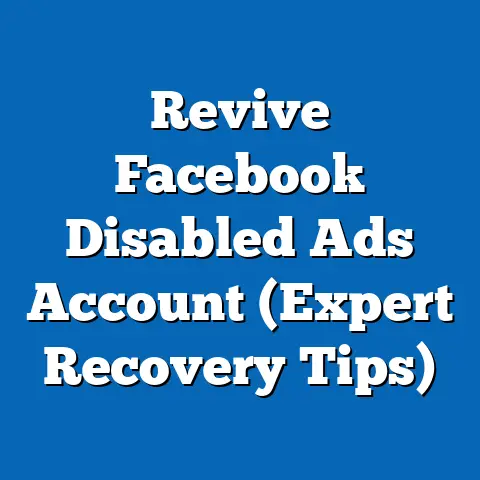162 Facebook Ads Secrets (Unlock Winning Strategies)
162 Facebook Ads Secrets: Unlock Winning Strategies
Why did the ad executive bring a ladder to the meeting? Because they heard the ROI was going through the roof! Okay, maybe that’s not the funniest joke, but in the ever-evolving landscape of digital marketing, especially when it comes to Facebook Ads, we’re all searching for that ladder to climb to success. Companies are constantly looking for innovative strategies to improve their ad performance, aiming to cut through the noise and connect with their target audience effectively.
That’s where these “secrets” come in. It’s not about some magical cheat code, but rather a comprehensive understanding of the platform, its capabilities, and how to leverage them strategically. By uncovering these strategies, you can dramatically improve your ad campaigns and see real, tangible results. So, let’s unlock these secrets together and transform your Facebook advertising game!
Understanding Facebook Ads
Facebook advertising isn’t just about throwing money at the platform and hoping for the best. It’s a powerful tool that, when wielded correctly, can drive significant results. Did you know that Facebook reaches over 2 billion people daily? That’s a massive audience waiting to be tapped into. In fact, according to Statista, Facebook’s advertising revenue in 2023 was around $134.9 billion, highlighting its effectiveness and popularity among advertisers.
There’s a wide array of ad types to choose from, each with its own unique benefits:
- Image Ads: Simple yet effective, these ads use a single image to capture attention. They’re great for showcasing products or services with a clear visual appeal.
- Video Ads: Captivating and engaging, video ads can tell a story, demonstrate a product in action, or simply grab attention with motion.
- Carousel Ads: Allowing you to display multiple images or videos in a single ad, carousel ads are perfect for showcasing a range of products or highlighting different features.
- Collection Ads: Designed for mobile, these ads make it easy for users to browse and purchase products directly from their phones.
- Lead Ads: Ideal for generating leads, these ads allow users to submit their information directly within the Facebook platform, without having to visit an external landing page.
But the key to success isn’t just choosing the right ad type. It’s about understanding your audience. Audience segmentation is crucial. You need to know who you’re targeting, what their interests are, and what motivates them. This understanding informs every aspect of your ad campaign, from the creative to the targeting settings.
Takeaway: Facebook Ads offer a wide reach and diverse ad formats, but understanding your audience is the foundation of a successful campaign.
The Anatomy of a Successful Facebook Ad
Think of a successful Facebook Ad like a well-composed symphony. Each instrument (or component) needs to play its part perfectly to create a harmonious and engaging experience. The key components are:
- Compelling Headlines: Your headline is the first thing people see, so it needs to grab their attention immediately. Think benefit-driven, question-based, or intriguing.
- Example: Instead of “New Shoes,” try “Walk on Clouds: Discover Our Comfort Shoes.”
- Engaging Visuals: Whether it’s an image or a video, your visual needs to be high-quality, relevant, and eye-catching. It should complement your headline and draw people in.
- Personal Story: I once ran an ad campaign for a local bakery. The ads with professional, staged photos performed okay, but the ads with candid, user-generated photos of customers enjoying their treats performed significantly better. Authenticity matters!
- Persuasive Copy: Your copy should clearly and concisely communicate the value proposition of your product or service. Highlight the benefits, address pain points, and create a sense of urgency.
- Example: “Tired of sleepless nights? Our weighted blanket helps you fall asleep faster and stay asleep longer. Order now and experience the difference!”
- Strong Call to Action (CTA): Tell people what you want them to do. Use clear, concise language and create a sense of urgency.
- Examples: “Shop Now,” “Learn More,” “Sign Up Today,” “Get Your Free Trial.”
- Example: Instead of “New Shoes,” try “Walk on Clouds: Discover Our Comfort Shoes.”
- Personal Story: I once ran an ad campaign for a local bakery. The ads with professional, staged photos performed okay, but the ads with candid, user-generated photos of customers enjoying their treats performed significantly better. Authenticity matters!
- Example: “Tired of sleepless nights? Our weighted blanket helps you fall asleep faster and stay asleep longer. Order now and experience the difference!”
- Examples: “Shop Now,” “Learn More,” “Sign Up Today,” “Get Your Free Trial.”
A/B testing is your best friend here. Don’t just assume you know what works best. Test different headlines, visuals, copy, and CTAs to see what resonates most with your target audience. Facebook’s Ads Manager makes A/B testing relatively straightforward.
- Pro Tip: I always recommend testing one element at a time to truly isolate what’s driving the performance. Changing too many variables at once makes it hard to determine which change had the biggest impact.
Takeaway: A successful Facebook Ad is a combination of a compelling headline, engaging visual, persuasive copy, and a strong CTA, all refined through A/B testing.
Targeting Your Audience
This is where the magic really happens. Facebook’s targeting options are incredibly granular, allowing you to reach exactly the right people with your message. You can target based on:
- Demographics: Age, gender, location, education, job title, and more.
- Interests: Hobbies, activities, pages they like, and topics they’re interested in.
- Behaviors: Past purchases, online activity, and other behaviors that indicate their interests and preferences.
- Custom Audiences: Upload your own customer list (email addresses or phone numbers) to target your existing customers on Facebook.
- Lookalike Audiences: Create an audience that’s similar to your existing customers, based on their demographics, interests, and behaviors. This is a powerful way to expand your reach and find new customers who are likely to be interested in your product or service.
Research is key. Use Facebook Audience Insights to explore the demographics, interests, and behaviors of your target audience. This tool can provide valuable insights that inform your targeting strategy.
- Example: Let’s say you’re selling organic baby food. You could target parents with children aged 0-2, who are interested in organic food, healthy eating, and parenting-related topics. You could also create a custom audience by uploading your existing customer list and creating a lookalike audience to reach new parents who are similar to your current customers.
Creating customer personas is another effective strategy. Develop detailed profiles of your ideal customers, including their demographics, interests, pain points, and motivations. This will help you tailor your ads to meet their specific needs and preferences.
- Personal Story: I worked with a client who was selling high-end watches. Initially, they were targeting a broad audience of “men interested in luxury.” The results were lackluster. By creating detailed customer personas (e.g., “The Successful Entrepreneur,” “The Discerning Collector”) and tailoring their ads to each persona’s specific interests and motivations, they saw a significant increase in engagement and sales.
Takeaway: Facebook’s targeting options are powerful, but require research and strategic thinking. Use Audience Insights, create customer personas, and continuously refine your targeting based on performance data.
Budgeting and Bidding Strategies
Understanding how to manage your budget and bidding strategies is crucial for maximizing your ROI. Facebook offers two main budgeting options:
- Daily Budget: Set a specific amount you’re willing to spend each day. This is a good option if you want to spread your budget evenly over time.
- Lifetime Budget: Set a total amount you’re willing to spend over the entire duration of your campaign. This is a good option if you have a specific end date in mind.
Choosing the right option depends on your goals and campaign duration. If you’re running a long-term campaign, a daily budget might be more appropriate. If you’re running a short-term campaign with a specific end date, a lifetime budget might be a better choice.
Facebook also offers two main bidding strategies:
- Automatic Bidding: Facebook automatically sets your bids to get the most results for your budget. This is a good option if you’re new to Facebook advertising or if you want to save time and effort.
- Manual Bidding: You manually set your bids for each ad set. This gives you more control over your costs, but it also requires more monitoring and optimization.
If you’re just starting out, I recommend using automatic bidding. As you gain more experience and data, you can experiment with manual bidding to optimize your costs and results.
- Pro Tip: Regardless of which bidding strategy you choose, it’s important to monitor your campaign performance regularly and adjust your bids as needed. If you’re not getting the results you want, try increasing your bids. If you’re spending too much money, try decreasing your bids.
Takeaway: Choose your budgeting and bidding strategies carefully based on your goals and campaign duration. Monitor your performance regularly and adjust your bids as needed to maximize your ROI.
Creative Strategies for Engaging Ads
In the crowded landscape of Facebook, standing out requires creativity and innovation. Here are some strategies for creating engaging ads:
- Leverage User-Generated Content (UGC): UGC is authentic and relatable, making it a powerful tool for building trust and credibility. Encourage your customers to share their photos and videos of your products or services and feature them in your ads.
- Example: A clothing brand could run a contest asking customers to share photos of themselves wearing their clothes. The winning photos could be featured in their ads.
- Tell a Story: Storytelling is a powerful way to connect with your audience on an emotional level. Create ads that tell a compelling story about your brand, your products, or your customers.
- Example: A non-profit organization could create an ad that tells the story of someone who has benefited from their services.
- Appeal to Emotions: Emotions drive decisions. Create ads that appeal to your audience’s emotions, such as joy, fear, or nostalgia.
- Example: An insurance company could create an ad that appeals to people’s fear of the unknown and highlights the importance of having adequate insurance coverage.
- Use Video Content: Video is one of the most engaging types of content on Facebook. Create short, attention-grabbing videos that showcase your products or services in action.
- Example: A restaurant could create a video that shows chefs preparing their signature dishes.
- Example: A clothing brand could run a contest asking customers to share photos of themselves wearing their clothes. The winning photos could be featured in their ads.
- Example: A non-profit organization could create an ad that tells the story of someone who has benefited from their services.
- Example: An insurance company could create an ad that appeals to people’s fear of the unknown and highlights the importance of having adequate insurance coverage.
- Example: A restaurant could create a video that shows chefs preparing their signature dishes.
I’ve seen brands successfully use creative strategies to stand out in crowded feeds. For example, Dove’s “Real Beauty” campaign used UGC and storytelling to challenge traditional beauty standards and connect with women on a deeper level. This campaign generated significant buzz and helped Dove build a strong brand identity.
- Personal Story: I once worked with a local brewery that was struggling to stand out in a crowded market. We created a series of video ads that told the story of the brewery’s founders, their passion for craft beer, and their commitment to using local ingredients. These ads resonated with the local community and helped the brewery build a loyal following.
Takeaway: Get creative with your ads! Use UGC, storytelling, emotional appeals, and video content to capture attention and connect with your audience on a deeper level.
Analyzing and Optimizing Ad Performance
Data is your guide. Without analyzing your ad performance, you’re flying blind. Here are some key metrics to track:
- Click-Through Rate (CTR): The percentage of people who click on your ad after seeing it. A high CTR indicates that your ad is relevant and engaging.
- Cost Per Click (CPC): The amount you pay each time someone clicks on your ad. A low CPC indicates that your ad is efficient and cost-effective.
- Conversion Rate: The percentage of people who take a desired action (e.g., make a purchase, sign up for a newsletter) after clicking on your ad. A high conversion rate indicates that your ad is effective at driving results.
- Cost Per Acquisition (CPA): The amount you pay for each conversion. A low CPA indicates that your ad is efficient at generating leads or sales.
- Return on Ad Spend (ROAS): The amount of revenue you generate for every dollar you spend on advertising. A high ROAS indicates that your ad is profitable.
Facebook Ads Manager provides a wealth of data about your ad performance. You can use this data to identify what’s working and what’s not, and make adjustments to your campaigns accordingly.
- Pro Tip: Don’t just look at the overall performance of your campaign. Drill down into the data to see how different ad sets, ads, and targeting options are performing. This will help you identify the most effective strategies and allocate your budget accordingly.
- Personal Story: I once worked with an e-commerce client who was struggling to generate sales from their Facebook ads. By analyzing their ad performance data, we discovered that their ads were driving a lot of traffic to their website, but very few people were actually making a purchase. We realized that their website was not optimized for conversions. By making some simple changes to their website, such as improving the product descriptions and streamlining the checkout process, we were able to significantly increase their conversion rate and generate a positive ROAS.
Takeaway: Data is your friend. Track your key metrics, analyze your ad performance, and make adjustments to your campaigns based on the data.
Conclusion
We’ve covered a lot of ground, and hopefully, I’ve unveiled some “secrets” that will help you unlock winning strategies for your Facebook Ads campaigns. Remember, it’s not about magic, but about understanding the platform, your audience, and the data.
From understanding the anatomy of a successful ad to mastering targeting options, budgeting strategies, creative techniques, and performance analysis, you now have a solid foundation for creating effective and profitable Facebook ad campaigns.
So, go forth and experiment! Start implementing these strategies, test different approaches, and see what works best for your business. And don’t forget to share your success stories in the comments below.
And finally, one last advertising joke to send you on your way: Why did the billboard get arrested? For indecent exposure! Happy advertising!




